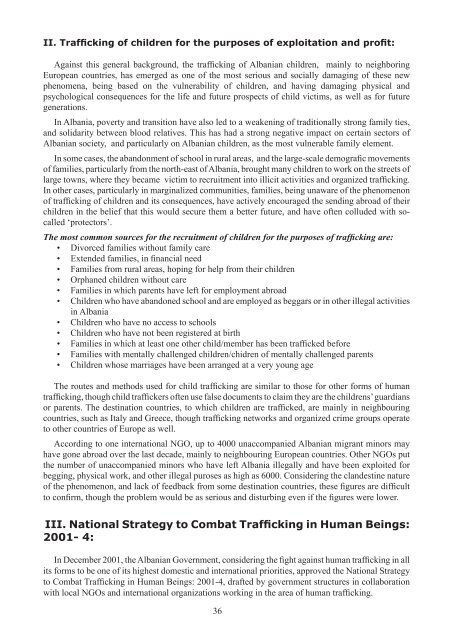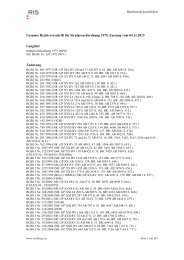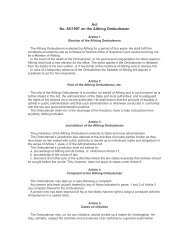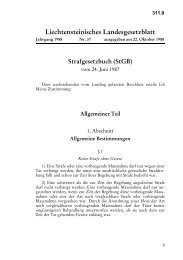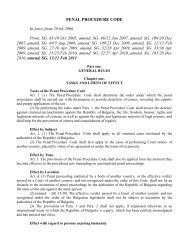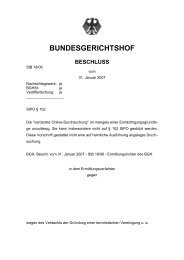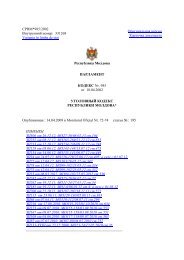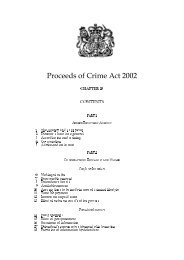strategjia kombetare shqiptare per luften kunder ... - Legislationline
strategjia kombetare shqiptare per luften kunder ... - Legislationline
strategjia kombetare shqiptare per luften kunder ... - Legislationline
You also want an ePaper? Increase the reach of your titles
YUMPU automatically turns print PDFs into web optimized ePapers that Google loves.
II. Trafficking of children for the purposes of exploitation and profit:<br />
Against this general background, the trafficking of Albanian children, mainly to neighboring<br />
European countries, has emerged as one of the most serious and socially damaging of these new<br />
phenomena, being based on the vulnerability of children, and having damaging physical and<br />
psychological consequences for the life and future prospects of child victims, as well as for future<br />
generations.<br />
In Albania, poverty and transition have also led to a weakening of traditionally strong family ties,<br />
and solidarity between blood relatives. This has had a strong negative impact on certain sectors of<br />
Albanian society, and particularly on Albanian children, as the most vulnerable family element.<br />
In some cases, the abandonment of school in rural areas, and the large-scale demografic movements<br />
of families, particularly from the north-east ofAlbania, brought many children to work on the streets of<br />
large towns, where they became victim to recruitment into illicit activities and organized trafficking.<br />
In other cases, particularly in marginalized communities, families, being unaware of the phenomenon<br />
of trafficking of children and its consequences, have actively encouraged the sending abroad of their<br />
children in the belief that this would secure them a better future, and have often colluded with socalled<br />
‘protectors’.<br />
The most common sources for the recruitment of children for the purposes of trafficking are:<br />
• Divorced families without family care<br />
• Extended families, in financial need<br />
• Families from rural areas, hoping for help from their children<br />
• Orphaned children without care<br />
• Families in which parents have left for employment abroad<br />
• Children who have abandoned school and are employed as beggars or in other illegal activities<br />
in Albania<br />
• Children who have no access to schools<br />
• Children who have not been registered at birth<br />
• Families in which at least one other child/member has been trafficked before<br />
• Families with mentally challenged children/chidren of mentally challenged parents<br />
• Children whose marriages have been arranged at a very young age<br />
The routes and methods used for child trafficking are similar to those for other forms of human<br />
trafficking, though child traffickers often use false documents to claim they are the childrens’guardians<br />
or parents. The destination countries, to which children are trafficked, are mainly in neighbouring<br />
countries, such as Italy and Greece, though trafficking networks and organized crime groups o<strong>per</strong>ate<br />
to other countries of Europe as well.<br />
According to one international NGO, up to 4000 unaccompanied Albanian migrant minors may<br />
have gone abroad over the last decade, mainly to neighbouring European countries. Other NGOs put<br />
the number of unaccompanied minors who have left Albania illegally and have been exploited for<br />
begging, physical work, and other illegal puroses as high as 6000. Considering the clandestine nature<br />
of the phenomenon, and lack of feedback from some destination countries, these figures are difficult<br />
to confirm, though the problem would be as serious and disturbing even if the figures were lower.<br />
III. National Strategy to Combat Trafficking in Human Beings:<br />
2001- 4:<br />
In December 2001, the Albanian Government, considering the fight against human trafficking in all<br />
its forms to be one of its highest domestic and international priorities, approved the National Strategy<br />
to Combat Trafficking in Human Beings: 2001-4, drafted by government structures in collaboration<br />
with local NGOs and international organizations working in the area of human trafficking.<br />
36


